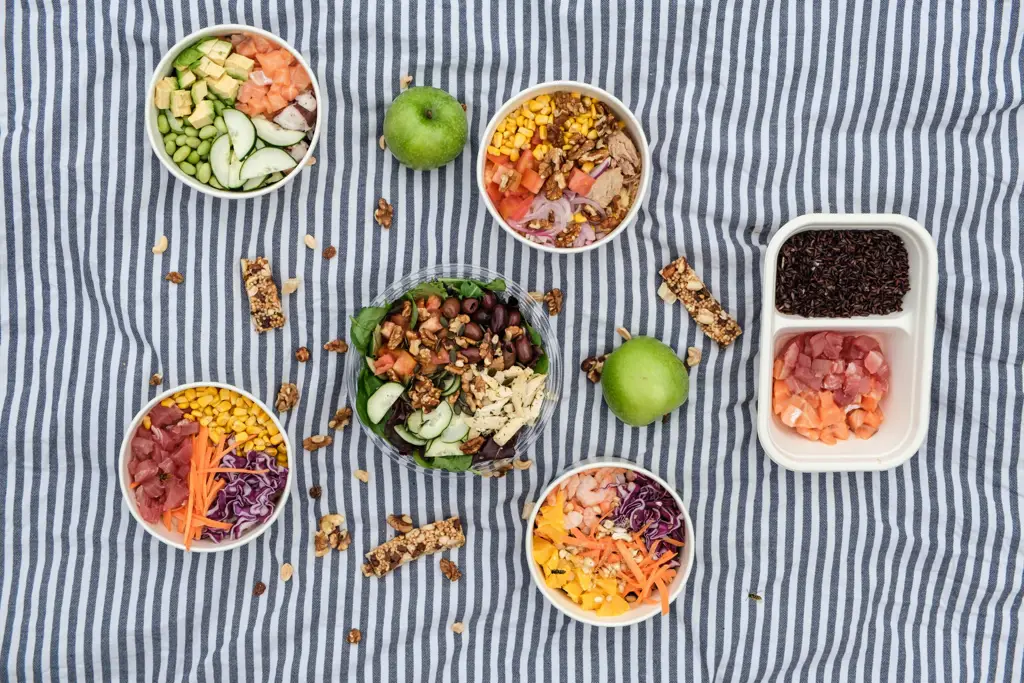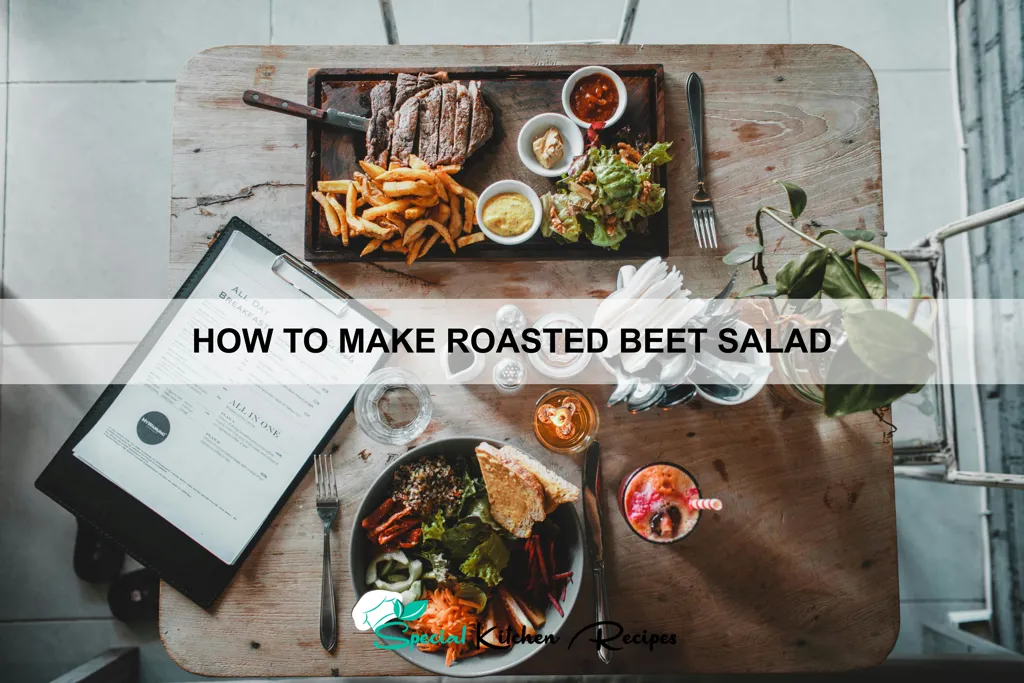The Classic Pear and Walnut Salad, while seemingly simple in its construction, boasts a surprisingly rich history interwoven with the culinary traditions of Europe. Pinpointing a precise origin is difficult, as variations of fruit and nut salads have existed for centuries. However, the combination of pears and walnuts, specifically, gained prominence in the late 19th and early 20th centuries, coinciding with the rise of more readily available and affordable fresh produce in many Western nations. The salad’s popularity likely stemmed from its elegant simplicity, making it a sophisticated yet achievable dish for both everyday meals and special occasions. This accessibility contributed significantly to its widespread adoption.
Historically, pears and walnuts have held individual significance in various cultures. Pears, long cultivated across Eurasia, were prized for their sweetness and delicate texture, appearing in ancient texts and artwork as symbols of prosperity and fertility. Walnuts, similarly, were valued for their nutritional richness and their symbolic connection to wisdom and longevity in many societies. Interestingly, global walnut production exceeds 1.5 million metric tons annually, highlighting the enduring popularity of this versatile nut. The combination of these two ingredients, therefore, created a culinary pairing that resonated with established cultural preferences and associations.
The Classic Pear and Walnut Salad’s cultural significance lies in its adaptability. It transcends specific national cuisines, finding its place in countless variations across Europe and North America. The core components – pears, walnuts, and a simple vinaigrette – remain constant, yet the additions of cheese (like blue cheese or goat cheese), herbs (such as mint or thyme), and even dried cranberries showcase the salad’s versatility and capacity for regional interpretation. In some regions, the salad might be served as a light lunch, while in others it might serve as a sophisticated side dish accompanying richer main courses. This adaptability, coupled with its appealing aesthetic, ensured its lasting presence on menus and in home kitchens.
Furthermore, the salad’s nutritional profile contributes to its enduring appeal. Pears are a good source of fiber and vitamin C, while walnuts are packed with healthy fats, protein, and antioxidants. Studies have shown that regular consumption of walnuts can contribute to improved cardiovascular health and cognitive function. The combination of these ingredients, therefore, offers a delicious and nutritious option that aligns with modern health-conscious trends. The Classic Pear and Walnut Salad, in essence, is not just a dish; it’s a testament to the enduring appeal of simple, yet elegant, food combinations that connect us to both history and contemporary culinary sensibilities.
Ingredients and Measurements
This Classic Pear and Walnut Salad recipe relies on the quality of its ingredients to deliver a truly exceptional flavor profile. Therefore, sourcing the best possible produce is highly recommended. The quantities listed below are designed to serve 4-6 people, easily adjustable for larger or smaller gatherings.
For the Salad:
- 2 ripe but firm Bosc pears: Bosc pears offer a lovely balance of sweetness and subtle tartness, making them ideal for this salad. Avoid pears that are overly soft or bruised, as they will not hold their shape well in the salad. Select pears with smooth, unblemished skin. If using other pear varieties, adjust the quantity slightly depending on their size. A slightly underripe pear will hold its shape better than an overripe one.
- 1/2 cup walnut halves: Walnuts provide a wonderful textural contrast and a rich, nutty flavor that complements the pears beautifully. Toasting the walnuts before adding them to the salad enhances their flavor significantly. Spread them on a baking sheet and toast in a preheated oven at 350°F (175°C) for 5-7 minutes, or until fragrant and lightly browned. Watch carefully to prevent burning.
- 4 ounces (115g) crumbled blue cheese: Blue cheese adds a pungent, salty counterpoint to the sweetness of the pears and the richness of the walnuts. Use a high-quality blue cheese with a well-developed flavor, but not one that is overly strong or pungent. Roquefort, Gorgonzola, or Stilton are all excellent choices. The amount can be adjusted to taste; some may prefer more, while others might prefer less.
- 2 cups baby spinach: Baby spinach provides a delicate, slightly peppery base for the salad. Ensure the spinach is fresh and thoroughly washed. Larger spinach leaves can be torn into bite-sized pieces. Other greens like arugula or spring mix can be substituted, but the flavor profile will be slightly altered.
- 1/4 cup crumbled bacon (optional): Adding crispy bacon introduces a smoky, salty element that enhances the overall flavor complexity. Cook bacon until crispy, then drain on paper towels before crumbling. Adjust the amount of bacon according to personal preference.
For the Dressing:
- 2 tablespoons balsamic vinegar: A good quality balsamic vinegar is key; its sweetness and acidity beautifully balance the salad’s ingredients. A reduction of balsamic vinegar will intensify the flavor if you have the time to prepare one.
- 1/4 cup extra virgin olive oil: Choose a high-quality extra virgin olive oil with a fruity flavor. The oil adds richness and helps to emulsify the dressing. A good quality olive oil will significantly impact the overall taste of the salad.
- 1 tablespoon honey or maple syrup: A touch of sweetness balances the acidity of the balsamic vinegar and the saltiness of the blue cheese. Adjust the amount of sweetener to your liking.
- 1/2 teaspoon Dijon mustard: Dijon mustard adds a subtle sharpness and helps to emulsify the dressing. Use a good quality Dijon mustard for the best results.
- Salt and freshly ground black pepper to taste: Season the dressing generously with salt and pepper to enhance the flavors. Taste and adjust seasonings as needed.
Note: All measurements are approximate. Feel free to adjust quantities according to your preference and the size of your pears and other ingredients.
Equipment List
Preparing a classic Pear and Walnut Salad, while seemingly simple, requires the right tools to ensure optimal results and efficient workflow. This equipment list details the necessary items, along with recommendations for achieving professional-quality results.
Sharp Paring Knife (8-10 inch blade): A sharp paring knife is crucial for precise peeling and coring of the pears. A dull knife will bruise the fruit, leading to unsightly blemishes and potentially affecting the texture. Invest in a high-quality knife and maintain its sharpness regularly using a honing steel and sharpening stone. This will make the entire preparation process smoother and more enjoyable.
Chef’s Knife (8-10 inch blade): While a paring knife handles the delicate pear work, a chef’s knife is essential for efficiently chopping the walnuts. A larger blade allows for quicker and more consistent chopping. Ensure your chef’s knife is also well-maintained and sharp for clean cuts and to prevent the walnuts from being crushed.
Cutting Board (Large, preferably wood or BPA-free plastic): A large cutting board provides ample space for prepping both the pears and walnuts. Avoid using glass cutting boards, as they can dull knives quickly. Wood cutting boards offer excellent stability, but require proper cleaning and sanitizing to prevent bacterial growth. A plastic cutting board is a more convenient option, provided it’s BPA-free.
Mixing Bowls (at least two, various sizes): You’ll need at least two mixing bowls: one for preparing the pear mixture and another for combining the dressing. Choose bowls with ample capacity to avoid spills. Stainless steel bowls are ideal for their durability and ease of cleaning. Glass bowls are also a good choice, but be mindful of their potential for breakage.
Whisk (8-10 inch): A whisk is essential for creating a smooth and emulsified vinaigrette. A balloon whisk is preferred for its ability to incorporate air and create a light dressing. A smaller whisk can be used if you are making a smaller quantity of dressing.
Measuring Cups and Spoons: Accurate measurements are key to achieving the perfect balance of flavors in the dressing. Use standard measuring cups and spoons to ensure consistency in your recipe. A set of both dry and liquid measuring cups is recommended.
Serving Bowl: Finally, a serving bowl is needed to present your finished salad beautifully. Choose a bowl that complements the aesthetic of your salad, and is of sufficient size to hold all the ingredients without overcrowding.
Optional: Salad Spinner: If you are using pre-washed salad greens, a salad spinner can help dry them thoroughly, preventing a watery salad. A good quality salad spinner ensures the greens are thoroughly dried without damaging the leaves.
Having all these tools at hand will streamline your preparation, ensuring a delicious and visually appealing Classic Pear and Walnut Salad.
Preparation of Ingredients (Washing, Peeling, Chopping)
This section details the meticulous preparation of ingredients for our Classic Pear and Walnut Salad. Proper preparation significantly impacts the final flavor and texture of the salad, ensuring a delightful culinary experience. We’ll be working with ripe but firm pears, walnuts, and a vibrant mix of greens.
Washing the Greens: Begin by thoroughly washing 5 ounces of your chosen mixed greens (e.g., baby spinach, arugula, frisée). Avoid using soap, as this will impart an unpleasant taste. Instead, rinse the greens under cold, running water, gently separating the leaves to remove any sand, dirt, or debris. A salad spinner is highly recommended to effectively remove excess water. This step is crucial for preventing a soggy salad.
Preparing the Pears: For this recipe, we’ll use two ripe but firm pears – Bosc or Anjou pears are excellent choices. Select pears that are free of bruises and blemishes. Wash the pears under cold running water, scrubbing gently to remove any dirt or pesticide residue. Next, peel the pears using a vegetable peeler. Work carefully to avoid removing too much of the pear’s flesh. Try to maintain a consistent thickness to the peel.
Chopping the Pears: Once peeled, halve the pears lengthwise and remove the core using a small paring knife or melon baller. Then, slice each pear half into thin, even slices, approximately 1/8 inch thick. Uniform slicing ensures even cooking and prevents some pieces from becoming overcooked while others remain undercooked. If you prefer, you can dice the pears instead, but thin slices offer a more elegant presentation.
Preparing the Walnuts: We’ll use 1/2 cup of walnuts for this recipe. Choose walnuts that are plump and have a rich, deep color. Avoid walnuts that are shriveled or discolored. Before chopping, you may choose to toast the walnuts for enhanced flavor. To toast, spread the walnuts on a baking sheet and bake at 350°F (175°C) for 5-7 minutes, or until fragrant and lightly browned. Watch carefully to prevent burning. Once cooled slightly, coarsely chop the walnuts using a sharp knife. Avoid over-chopping, as you want to retain some texture in the final salad.
Optional additions: While not essential, you might consider adding other ingredients to further enhance your salad. For example, finely chopped red onion adds a nice pungent bite. If using red onion, wash and peel it thoroughly before finely chopping approximately 1/4 cup. Remember to store all prepared ingredients separately until ready to assemble the salad to preserve their freshness and prevent discoloration.
Important Note: Prepare all ingredients just before assembling the salad to maintain optimal freshness and prevent unwanted browning of the pears. Proper preparation is key to a delicious and visually appealing Classic Pear and Walnut Salad.
Dressing Preparation
The success of a Classic Pear and Walnut Salad hinges significantly on the quality of its dressing. A poorly executed dressing can overpower the delicate flavors of the pears and walnuts, while a well-crafted one elevates the entire dish. This section details the preparation of a simple yet elegant vinaigrette that perfectly complements the salad’s ingredients.
We’ll be making a classic French vinaigrette, known for its balance of acidity, richness, and subtle sweetness. The ratio of oil to vinegar is crucial; too much oil will make the dressing heavy, while too much vinegar will be overly tart. The ideal ratio is 3 parts oil to 1 part vinegar. For this recipe, we’ll be using a combination of walnut oil and apple cider vinegar, which harmonizes beautifully with the pears and walnuts.
Ingredients:
- 6 tablespoons walnut oil (approximately 85ml)
- 2 tablespoons apple cider vinegar (approximately 30ml)
- 1 tablespoon honey (approximately 15ml) – Adjust to your preferred sweetness level.
- 1 teaspoon Dijon mustard (approximately 5ml) – Adds a subtle tang and emulsifies the dressing.
- 1/2 teaspoon salt (approximately 2.5g) – Use sea salt for a superior flavor.
- 1/4 teaspoon freshly ground black pepper (approximately 1.25g) – Freshly ground pepper offers a more intense flavor than pre-ground.
Instructions:
Begin by whisking together the honey and Dijon mustard in a small bowl. This step ensures the honey is fully incorporated and prevents it from clumping when the oil is added. Thorough whisking is key to creating a smooth and emulsified dressing.
Slowly drizzle in the apple cider vinegar while continuously whisking. This gradual addition helps to create a stable emulsion and prevents the dressing from separating. Don’t rush this process; take your time to ensure a smooth, consistent texture.
Next, slowly add the walnut oil in a thin stream, whisking constantly. The continuous whisking incorporates the oil into the vinegar mixture, preventing separation and creating a creamy, emulsified dressing. If the dressing begins to separate, continue whisking vigorously. A few drops of water can also help re-emulsify.
Finally, season the dressing with salt and freshly ground black pepper to taste. Taste the dressing and adjust the seasoning as needed. You might prefer a bit more honey for sweetness, or a touch more vinegar for tartness. Taste testing is crucial to achieving your desired balance of flavors.
Once the dressing is perfectly seasoned, set it aside until ready to use. You can prepare the dressing ahead of time; it will keep well in the refrigerator for up to 3 days. However, for the best flavor, it is recommended to make the dressing just before serving.
Salad Assembly
With your perfectly prepared ingredients, assembling the Classic Pear and Walnut Salad is a breeze. However, a few key techniques will ensure your salad is not only visually appealing but also boasts optimal texture and flavor. This section details the step-by-step process, emphasizing crucial points for success.
Begin by preparing your salad bowl. Choose a bowl that is appropriately sized for the quantity of salad you’re making. Too small, and the salad will look overcrowded; too large, and it will appear sparse. A large, shallow bowl is ideal for showcasing the vibrant colors and textures of the ingredients.
Next, add the base of your salad. For this recipe, we’ll start with the mixed greens. Use approximately 5 ounces (140g) of mixed greens, ensuring a good variety of textures and colors. Gently toss the greens in the bowl to distribute them evenly. Avoid over-handling, as this can bruise the leaves and make them wilt prematurely.
Now, it’s time to incorporate the pears. Use 2 ripe but firm pears, thinly sliced. The thin slices will allow for even distribution and prevent the pears from overpowering the other components. Arrange the pear slices artfully over the greens, creating a visually appealing pattern. Avoid overlapping the slices excessively to ensure each piece is visible and easily accessible.
Next, add the walnuts. Use ½ cup (60g) of walnuts, toasted and roughly chopped. Toasting the walnuts enhances their flavor and adds a delightful crunch. Scatter the walnuts evenly over the pears and greens. Avoid clumping the walnuts together; distribute them evenly to provide consistent texture throughout the salad.
The crumbled blue cheese is next. Use approximately 4 ounces (115g) of high-quality blue cheese, crumbled into small, bite-sized pieces. Distribute the blue cheese evenly, ensuring that each bite contains a pleasing amount of the pungent yet creamy cheese. Avoid large clumps of blue cheese as this can overpower other flavors.
Finally, prepare the vinaigrette. For this recipe, approximately ¼ cup (60ml) of your prepared vinaigrette should suffice. You can drizzle it directly over the assembled salad or, for a more even distribution, gently toss the salad with the dressing just before serving. Avoid over-dressing the salad as this will make the greens soggy and unappetizing.
Presentation is key. Once the salad is assembled, take a moment to arrange the ingredients to create a visually appealing presentation. Consider the color contrast and texture variation. A well-presented salad is more inviting and enhances the overall dining experience. Serve immediately to enjoy the salad at its peak freshness.
Serving Suggestions
This Classic Pear and Walnut Salad is incredibly versatile and can be enjoyed in a variety of ways, depending on the occasion and your personal preferences. Whether you’re serving it as a light lunch, a sophisticated starter, or a side dish to complement a main course, these suggestions will help you elevate your presentation and maximize the flavour profile.
For a Light Lunch or Brunch: A generous 150-200g serving of the salad makes a satisfying and healthy lunch. Consider adding a dollop of plain Greek yogurt (approximately 2 tablespoons) or a light vinaigrette dressing (1-2 tablespoons) for extra creaminess and tang. You can also pair it with a slice of crusty bread or a side of whole-wheat crackers to create a more complete meal. Avoid heavy dressings as they can overpower the delicate flavors of the pears and walnuts.
As a Starter or Appetizer: For a sophisticated starter, serve smaller portions of the salad (approximately 100g per person) in elegant bowls or on small plates. A simple balsamic glaze (1 teaspoon per serving, drizzled artistically) adds a touch of elegance and a beautiful contrast in colour and flavour. Garnish strategically with a few fresh mint leaves or a sprinkle of crumbled goat cheese for an extra visual appeal and a subtle flavour boost. Presentation is key here; consider using attractive serving ware.
As a Side Dish: This salad is the perfect accompaniment to a variety of main courses. Its freshness cuts through the richness of roasted meats like chicken or duck. It pairs beautifully with grilled fish or even vegetarian options such as lentil stew or roasted vegetables. For a side dish, a serving size of 120-150g per person is ideal. Adjust the dressing accordingly; a slightly more robust vinaigrette (2-3 tablespoons per serving) might be necessary to complement a richer main course. You might also consider adding a small amount of crumbled blue cheese for a more assertive flavour profile.
Temperature Considerations: This salad is best served chilled, allowing the flavours to meld and the pears to retain their crispness. Prepare the salad ahead of time (up to 4 hours before serving) to allow the ingredients to marry. However, avoid adding the dressing until just before serving to prevent the salad from becoming soggy. If serving as a side dish to a warm main course, ensure the salad is sufficiently chilled to provide a refreshing contrast in temperature.
Creative Variations: Don’t be afraid to experiment! Add other fruits like apples or pomegranate seeds for extra texture and sweetness. Consider incorporating different types of nuts, such as pecans or almonds. A sprinkle of dried cranberries or chopped dates can add a delightful chewy texture and sweetness. Remember to maintain balance; too many additions might overpower the original flavour profile. A little experimentation can lead to delicious and unique variations to suit your taste.
Recommendations for Classic Pear and Walnut Salad
This Classic Pear and Walnut Salad is a delightful combination of sweet and savory flavors, offering a refreshing and satisfying meal or side dish. To enhance your enjoyment and ensure optimal quality, consider the following recommendations:
Serving Suggestions: This salad is incredibly versatile. It can be served as a light lunch on its own, paired with a crusty baguette for a more substantial meal, or as a sophisticated side dish alongside roasted chicken, grilled fish, or pork tenderloin. The subtle sweetness of the pears complements the richness of many proteins. For a heartier salad, consider adding crumbled goat cheese or blue cheese for a tangy contrast. A sprinkle of toasted pecans or pumpkin seeds can add additional textural interest and nutty flavor. A light vinaigrette dressing is recommended to avoid overpowering the delicate pear flavor. Consider serving it in individual glasses for a more elegant presentation.
Storage Conditions: For best results, it’s recommended to prepare this salad just before serving. The pears can brown if left exposed to air for extended periods. However, if preparing ahead is necessary, store the pears, walnuts, and any other salad components separately in airtight containers in the refrigerator. Assemble the salad just before serving and add the dressing right before consumption to prevent the salad from becoming soggy. Do not store the dressed salad for extended periods.
Complementary Dishes: The Classic Pear and Walnut Salad pairs exceptionally well with a variety of dishes. Its light and refreshing nature makes it an ideal accompaniment to richer, more substantial meals. Consider serving it alongside:
- Roasted poultry (chicken, turkey, duck)
- Grilled or pan-seared fish (salmon, cod, trout)
- Pork tenderloin or chops
- Quiches or tarts
- Creamy soups (e.g., butternut squash soup)
The salad’s contrasting textures and flavors provide a delightful balance to these heartier options.
Nutritional Information (per serving, approximate values): The exact nutritional content will vary depending on the specific ingredients and quantities used. However, a typical serving of this salad is likely to contain approximately:
- Calories: 250-350
- Fat: 15-25g (depending on the type and amount of nuts and dressing)
- Protein: 5-10g
- Carbohydrates: 20-30g
- Fiber: 5-8g
Note: These are estimates and may vary. For precise nutritional information, use a nutrition calculator and input your specific recipe details.
Enhancements: To elevate this salad further, consider adding a sprinkle of fresh herbs such as chives, parsley, or thyme. A drizzle of balsamic glaze can also add a touch of sweetness and acidity. Experiment with different types of nuts or seeds for varied textures and flavors. Remember to always use fresh, high-quality ingredients for the best possible taste and texture.





